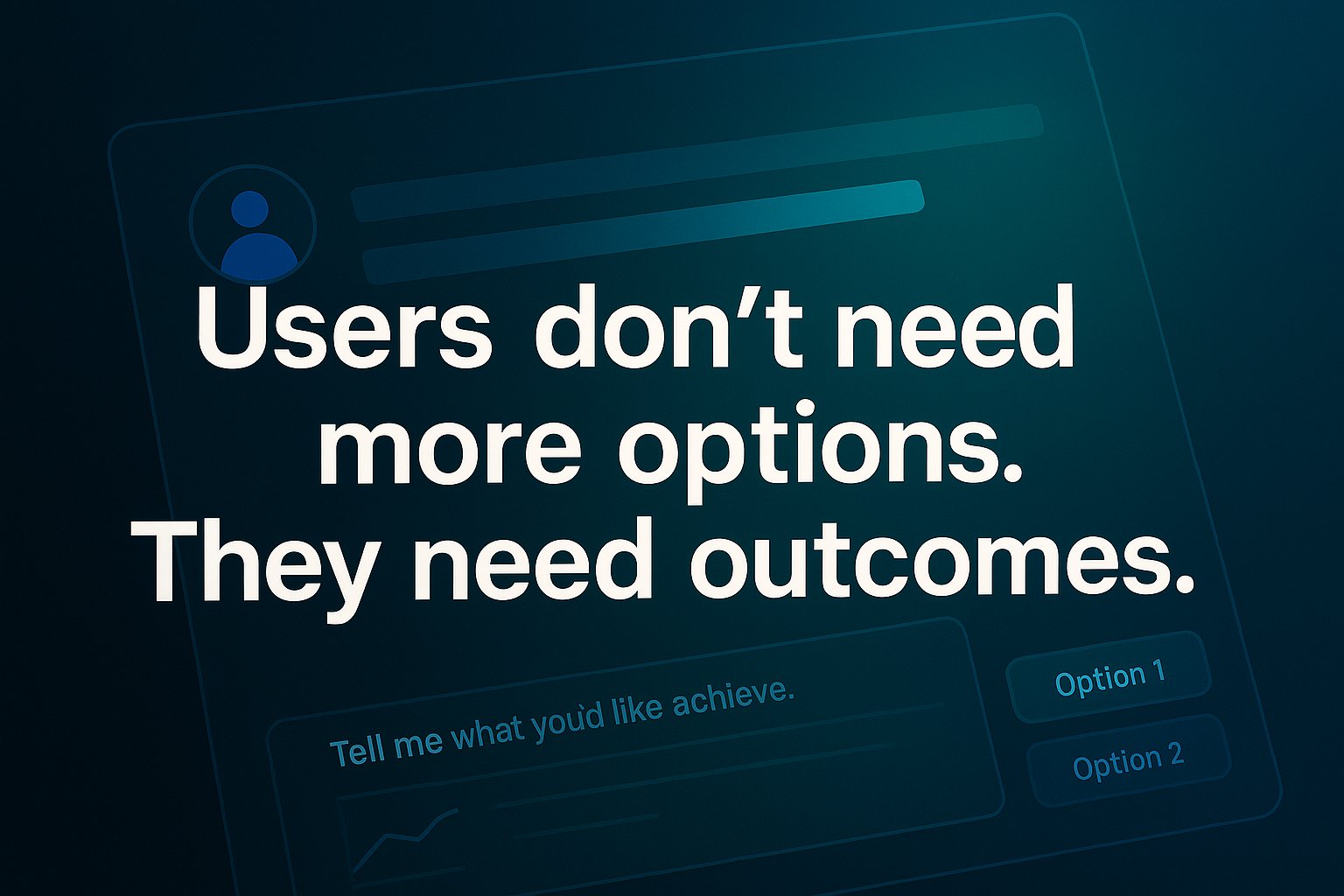
Purpose
This guide outlines five initial plays to introduce agentic behavior into a product with minimal disruption, delivering measurable value while setting the foundation for longer-term AI-native experiences.
How to Evangelize
Frame agentic interfaces as a low-risk path to high-value differentiation. Emphasize:
- Reduced friction in key user workflows
- Reduced friction in key user workflows
- Higher re-engagement through contextual responsiveness
- Data-driven refinement loops to increase user success over time
Position it as a modern enhancement of usability; not a replatforming effort.
Where to Begin
Select one critical but non-core workflow (e.g., task setup, checklist, feedback submission) where:
- Friction is measurable
- User success is easy to define
- Agentic intervention can be tested side-by-side with the current experience
Pilot a single agentic play, observe outcomes, and build momentum.
What to Expect
- Modest technical effort for high UX upside
- Initial skepticism from product and UX teams
- A learning curve in orchestrating transient UI elements dynamically
- A need to tune prompts and interactions based on usage data
How to Overcome Objections
Objection: "It’s just UX; we don’t need AI for that."
Response: Agentic UX adapts to user context in real time, something static flows can’t do. This is about intelligence, not just design.
Objection: "It complicates our product surface."
Response: The opposite. It reduces UI footprint by surfacing only what’s relevant in the moment.
Objection: "We can’t justify it without hard ROI."
Response: Pilot metrics (e.g., flow completion, task success, re-engagement) can quantify gains and set the stage for scaled investment.
Framing Business Value by Play
- Micro-Orchestration → Faster task completion, lower abandonment = efficiency
- Suggest, Don’t Command → Higher user success = reduced support burden
- Intent Replay Prompt → Reactivation of dormant users = retention uplift
- Agentic UI Node Injection → Faster decision inputs = higher productivity
- Path-Aware Undo → Error recovery = user trust and operational quality
Agentic Interface: First-Step Experiments
Goal
Introduce agentic behavior in ways that reduce user friction and show smart, context-aware responsiveness.
1. Micro-Orchestration
- Use case: Multi-step form or workflow
- Agentic move: Present next most relevant step based on user state
- Test it by: A/B static vs. adaptive flow
- Success signal: Higher completion rates, lower drop-off
2. Suggest, Don’t Command
- Use case: User pauses or hesitates
- Agentic move: Inline nudge like “Want help setting this up?”
- Test it by: Trigger on idle/partial entry
- Success signal: Increased task success
3. Intent Replay Prompt
- Use case: Returning user with incomplete work
- Agentic move: “Pick up where you left off?” prompt
- Test it by: Follow-through on resumed flows
- Success signal: Higher re-engagement
4. Agentic UI Node Injection
- Use case: Workflow triggered by event or conversation
- Agentic move: Inject structured input (e.g., form, file picker) inline
- Test it by: Compare static vs. dynamic interaction
- Success signal: Faster completion, user satisfaction
5. Path-Aware Undo
- Use case: User removes or alters data
- Agentic move: “Undo last 3 changes?” contextual prompt
- Test it by: Offer in low-risk flows
- Success signal: Lower error rate, higher trust
This is a pragmatic path to modern interface intelligence. Start small. Measure fast. Expand deliberately.